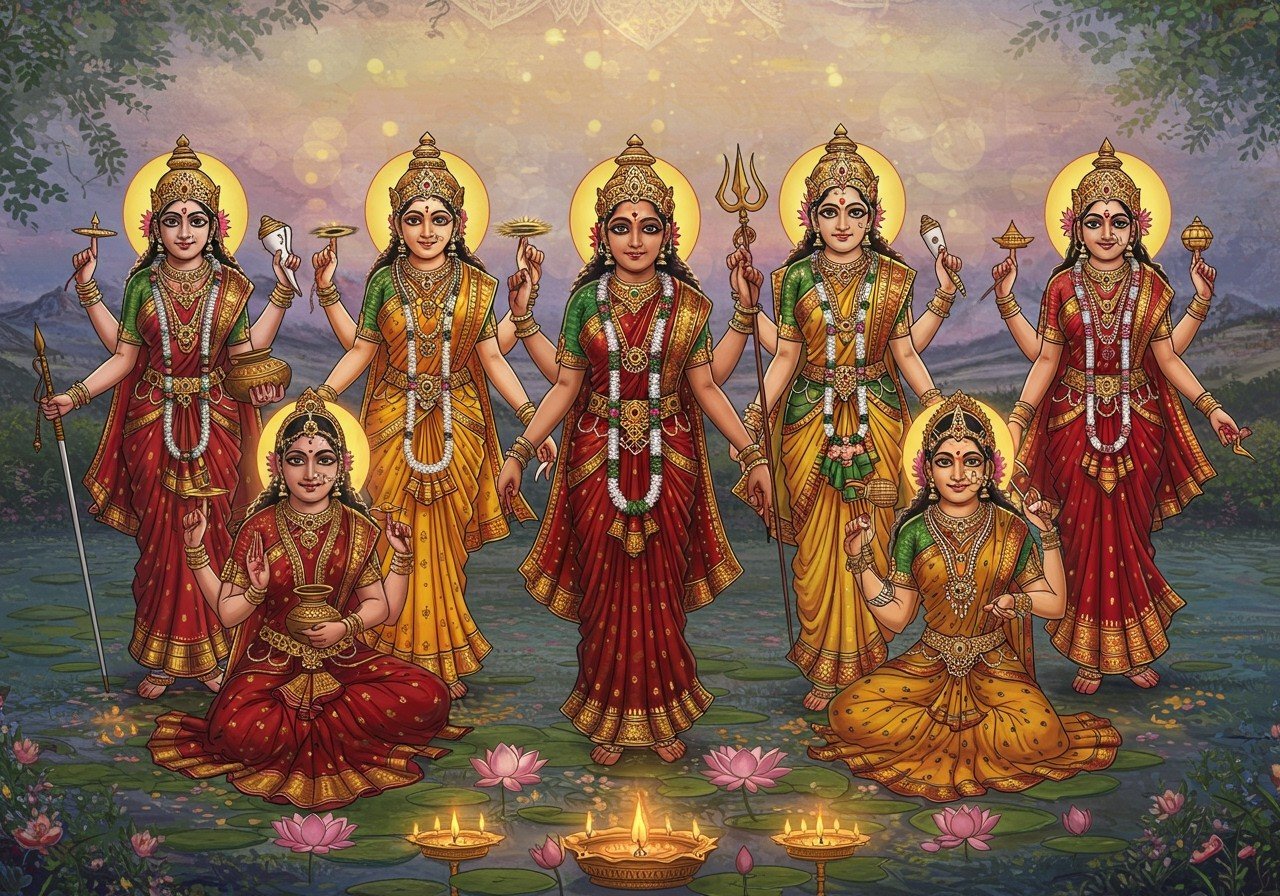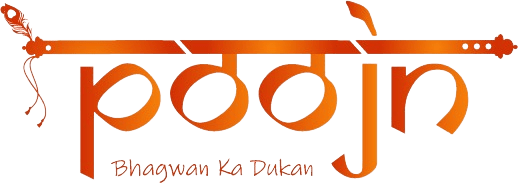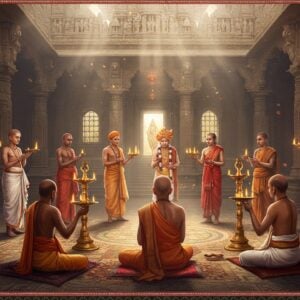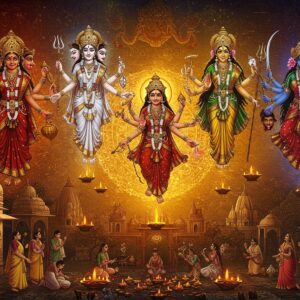
The Matrikas, revered as the “Divine Mothers,” hold a significant place in the tapestry of Hindu beliefs. These powerful goddesses represent different facets of the divine feminine, embodying both nurturing and formidable aspects. This exploration delves into their origins, iconography, and significance, offering a glimpse into their profound influence on Hindu spirituality.
Unveiling the Origins of the Matrikas
The roots of Matrika worship can be traced back to ancient times, possibly even to the Vedic period and the Indus Valley Civilization. Over centuries, their reverence evolved, and by the fifth century CE, they were integrated into mainstream Hinduism as Tantric deities. The Gangadhara inscription of Vishwa Varman provides the earliest epigraphic evidence of their presence, while sculpted forms dating back to the third century BCE showcase their enduring visual representation. For a deeper dive into the historical evolution of Hinduism, explore these resources: Hinduism: A Complete History and Origin and Hinduism: A Concise History and Exploration of its Origins.
Decoding the Iconography of the Matrikas
The Matrikas are often depicted together, usually in a row, symbolizing the unified force of the divine feminine. They are typically seated in lalitasana, a relaxed posture, adorned with ornate jewelry, reflecting both their power and grace. Each Matrika is associated with a male deity, representing that god’s Shakti, or energy. They often mirror their male counterparts, carrying similar weapons, ornaments, and riding the same vahanas (vehicles). Their depictions, frequently flanked by Virabhadra and Ganesha, can be found in shrines across India. The presence of infants in their arms symbolizes their nurturing love and maternal benevolence. These captivating details add depth and meaning to their iconography.
The Matrikas: Names and Associations
While typically seven (Saptamatrikas) or eight (Ashtamatrikas) are venerated, the number can vary based on regional traditions. Let’s explore some of the prominent Matrikas:
- Brahmani: The Shakti of Brahma, depicted in yellow with four heads representing the Vedas. She holds items like a rosary, water pot (kamandalu), and rides a swan (hamsa), embodying pride and knowledge.
- Vaishnavi: Vishnu’s Shakti, dark-complexioned, carrying Vishnu’s chakra (discus), shankha (conch), and riding Garuda (eagle). She represents covetousness, symbolizing the desire to preserve and protect.
- Maheshwari: Shiva’s Shakti, white-complexioned with three eyes, holding a trident (trishula) and drum (damaru), and riding Nandi (bull). She embodies wrath, representing the transformative power of destruction. You can find exquisite murtis of Maa Tara, another form of the divine feminine, at Poojn.in.
- Indrani: Indra’s Shakti, with three eyes and four arms, wielding a thunderbolt (vajra) and riding an elephant. She is associated with fault-finding, symbolizing discernment and justice.
- Kaumari: Kartikeya’s Shakti, youthful in appearance, holding a spear (shakti) and riding a peacock. She signifies illusion, representing the transient nature of reality.
- Varahi: Varaha’s Shakti, with a boar’s face and human body, holding a sword and shield. She represents envy, symbolizing the desire for spiritual growth and transformation.
- Chamunda: Devi’s Shakti (Durga or Kali), with a fierce appearance, holding a trident, sword, skull cup (kapala), and riding an owl. She is associated with tale-bearing, representing the confrontation of negativity.
Sometimes, Narasimhi (Narasimha’s Shakti) or Yogeshwari (representing desire) are included. The numbers seven and eight hold special significance in Hinduism, representing completeness and cosmic balance. For a deeper understanding of the divine feminine in Hinduism, explore India’s Sacred Shakti Peethas.
The Significance of the Matrikas in Rituals and Worship
The Matrikas are revered for their protective and nurturing qualities, playing a vital role in various aspects of life, from fertility and health to prosperity and protection. They are invoked during times of crisis, offering solace and strength to their devotees. Acting as intermediaries between devotees and the supreme goddess, they facilitate a deeper connection with the divine. Their presence is celebrated in festivals like Navaratri and Durga Puja, where their energies are honored and invoked. Poojn.in offers a Shiv Puja kit for those seeking to connect with another powerful deity.
The Matrikas: A Timeless Connection
The Matrikas remain a potent symbol of the divine feminine in Hinduism. Their worship, rich with symbolism and tradition, offers a pathway to connect with ancient energies and wisdom. By understanding their origins, iconography, and significance, we gain a deeper appreciation for the multifaceted nature of Hindu spirituality. Discover a range of authentic puja items at Poojn.in to enhance your spiritual practice and connect with these powerful goddesses.


